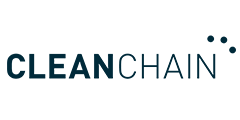Navigating Brand Standards: The Imperative of Transparency in Vendor Compliance
Article
For vendors seeking to meet brand standards, this means ensuring that every aspect of their operations is open to scrutiny. From ethical labour practices to environmental sustainability initiatives, brands expect vendors to uphold the highest standards of transparency and accountability.
In today’s marketplace, where consumer awareness and demand for ethical, sustainable products are on the rise, meeting brand standards has become more than just a regulatory requirement—it’s a strategic imperative. Vendors, suppliers, and manufacturers alike are under increasing pressure to align with brand expectations, which often include stringent criteria for transparency into operations and supply chains. In this blog, we delve into the intricate requirements that vendors must adhere to in order to meet brand standards, focusing particularly on the crucial aspect of transparency.
Transparency: The Cornerstone of Brand Integrity
Transparency is no longer merely a buzzword; it’s a foundational principle upon which brand integrity is built. Brands today are expected to provide full visibility into their operations, from sourcing raw materials to manufacturing processes and beyond. This transparency extends not only to their own practices but also to those of their suppliers and partners throughout the supply chain.
For vendors seeking to meet brand standards, this means ensuring that every aspect of their operations is open to scrutiny. From ethical labour practices to environmental sustainability initiatives, brands expect vendors to uphold the highest standards of transparency and accountability.
Challenges in Achieving Transparency
While the importance of transparency is clear, achieving it can be a daunting task for vendors, especially those operating in complex global supply chains. Numerous challenges stand in the way, including:
Supply Chain Complexity: Many vendors source materials and components from multiple suppliers, often located in different countries with varying regulations and standards. Managing transparency across such a diverse supply chain can be challenging, requiring robust systems and processes for data collection and reporting.
Despite these challenges, vendors can take proactive steps to enhance transparency and meet brand standards effectively.
To learn more on to enhance transparency register for our webinar: Exploring CleanChain’s Dashboard Functionality: A Platform Demo
In Conclusion
Meeting brand standards is no longer optional—it’s a prerequisite for success in today’s competitive marketplace. For vendors, transparency is a central tenet of brand compliance, requiring open and honest disclosure of operations and supply chain practices. While achieving transparency can be challenging, it is essential for maintaining brand integrity and meeting the expectations of consumers and stakeholders alike.




